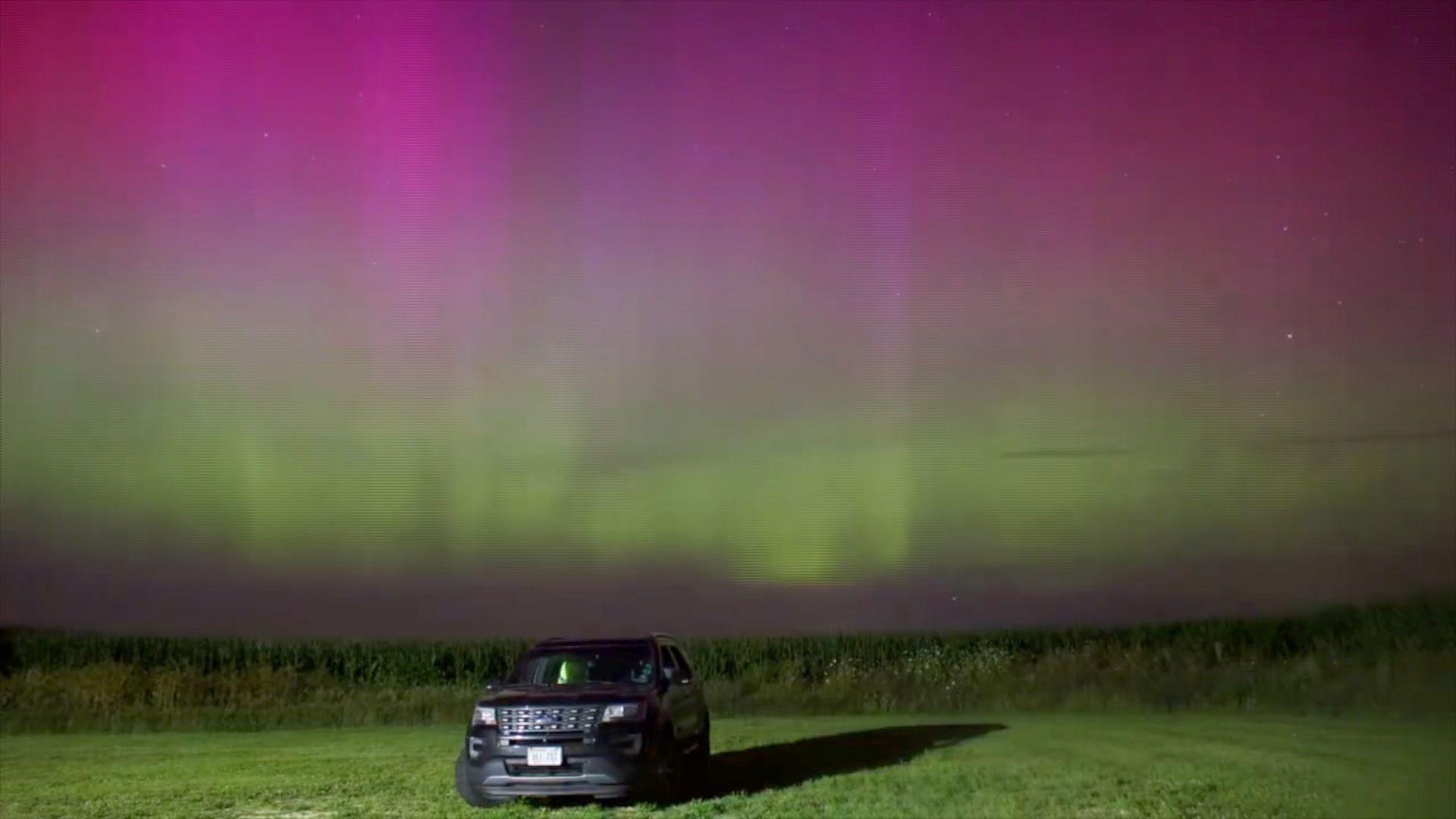When can we next see the Northern Lights?

A stunning display of glowing, swirling lights were seen in the night sky above Morpeth, Northumberland
- Published
This week, north-east England and Cumbria have been treated to two celestial delights: the Northern lights were visible, as was the Perseid meteor shower. People have pointed their cameras skyward and sent in their stunning night-sky photos from across the area. Meanwhile, experts in our region say there are even more spectacles on the horizon.
Lead astronomer at the Grassholme Observatory in County Durham, Gary Fildes, said it had been a really interesting week "because we've been exposed to two really super interesting phenomena".
"One of them is the Northern Lights, which is probably everybody's favourite," he said. "And then the other was the Perseid meteor shower, which is an annual event where we see an uptick in shooting stars."
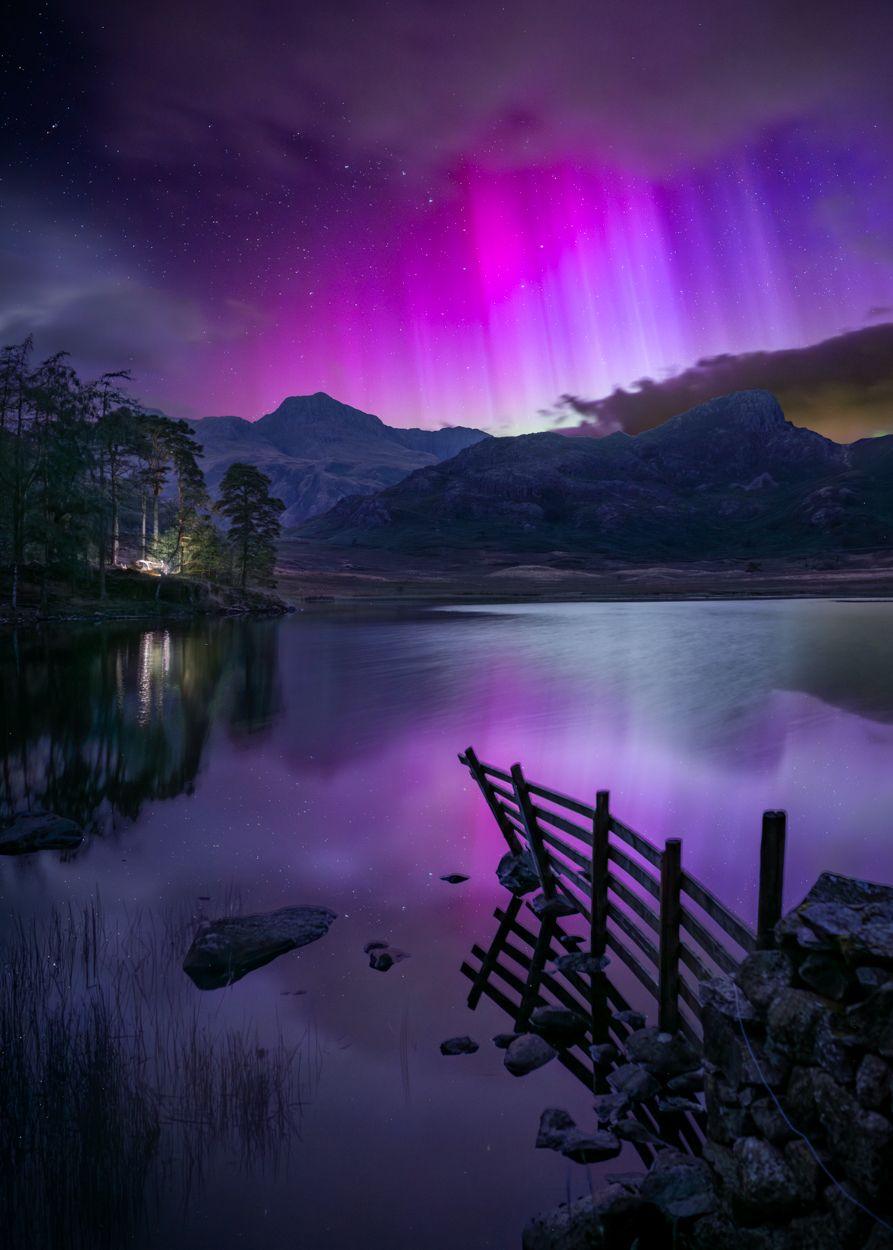
The Northern Lights could be seen in Blea Tarn in Cumbria this week
When will we see the Northern Lights again?
The Northern Lights - or aurora borealis - were "difficult to predict", Mr Fildes said.
"But we're right at the peak time to see them."
The sun is reaching a period of "solar maximum", where it becomes more and more magnetically active during an 11-year solar cycle.
Mr Fildes said: "We're not really sure how long this is going to last, but we could expect, maybe over the next year or two, that we would be at the peak activity of the sun being capable of producing the correct conditions so that we would see the Northern Lights here on Earth."
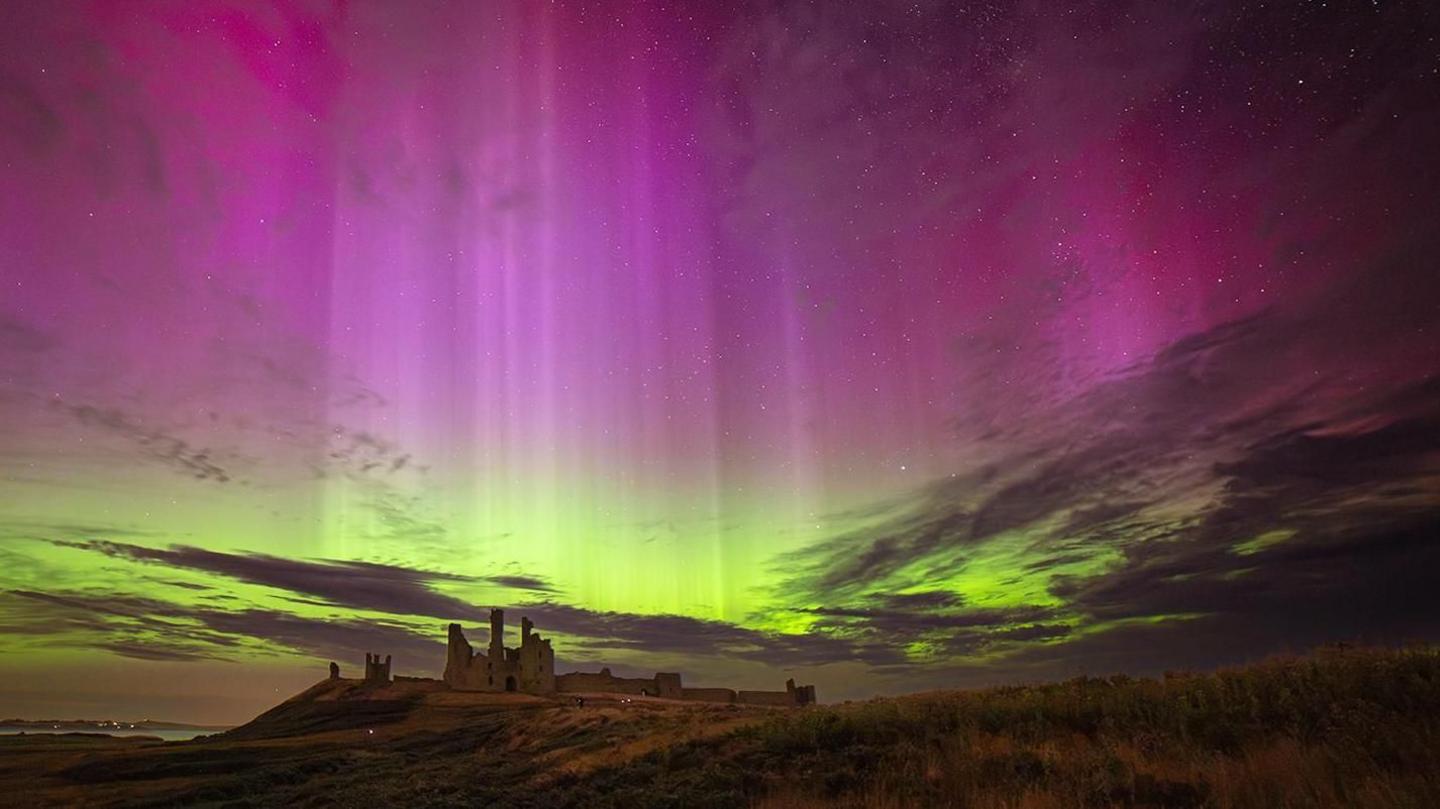
Paul captured an impressive aurora in Craster, Northumberland on Monday night
But people still need to do their homework to know when the Northern Lights will be visible.
The most impressive auroras occur when the sun emits large clouds of particles called "coronal mass ejections".
"If that happens, you get about two days' notice that these particles will arrive here on Earth and produce, potentially, these big huge magnetic storms."
Mr Fildes said it also "preferably" needs to be a moonless night, and it needs to be clear.
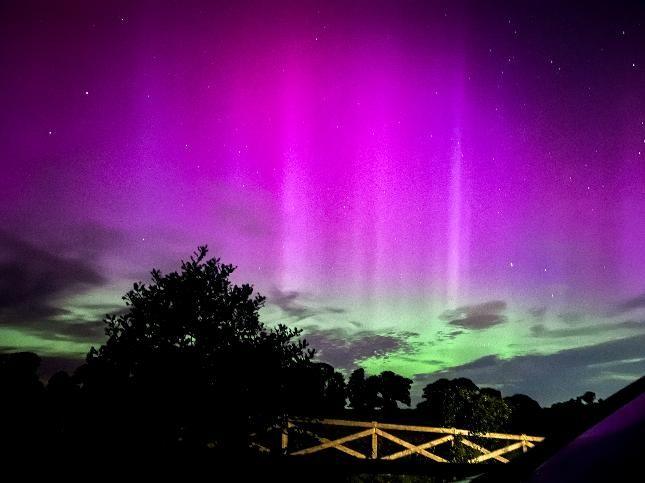
Stunning lights were spotted in Consett, County Durham
When will the next Perseid meteor shower be?
The Perseid meteor shower is an annual event, and will therefore next be visible in August 2025.
The Perseids pass through our atmosphere every year when the Earth orbits through debris left by the Swift-Tuttle comet.
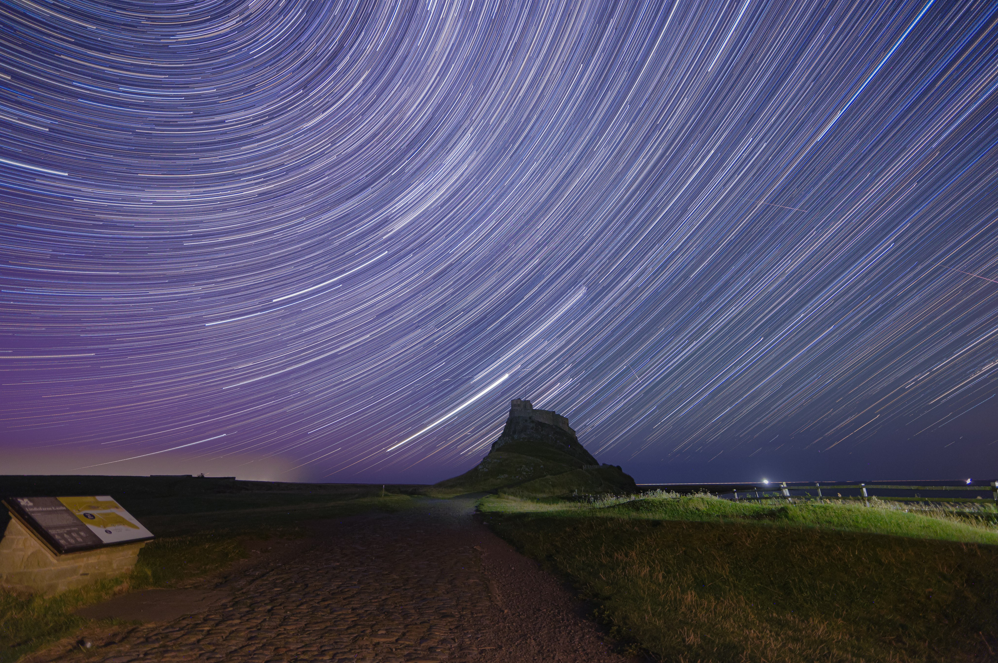
Tom stacked 160 shots from Holy Island to create this image, where Perseids can also be seen
What other celestial phenomenon will we see this year?
Mr Fildes said night sky watchers had plenty more to look forward to.
The Geminid meteor shower happens in mid-December every year, he said.
"This is the next big one, and it can produce upwards of 60 to 80 meteors per hour.
"It needs to be clear and they can be like buses, right? You don't see any at all, and then you'll wait 15 minutes and there's, like, four or five of them at once and it's pretty," Mr Fildes said.

Chris pointed his camera skyward in Redcar and Cleveland earlier this month
The planets also make a return, external as we head into autumn, Mr Fildes said.
Saturn will become more visible on the horizon, "and then later on towards November time, we get the giant planet Jupiter and the beautiful red planet Mars joining in on the show", he said.
They can be seen through small telescopes.
Follow BBC North East on X (formerly Twitter), external, Facebook, external and Instagram, external and follow BBC Cumbria on X (formerly Twitter), external, Facebook, external and Instagram, external. Send your story ideas to northeastandcumbria@bbc.co.uk.
Related topics
- Published14 August 2024
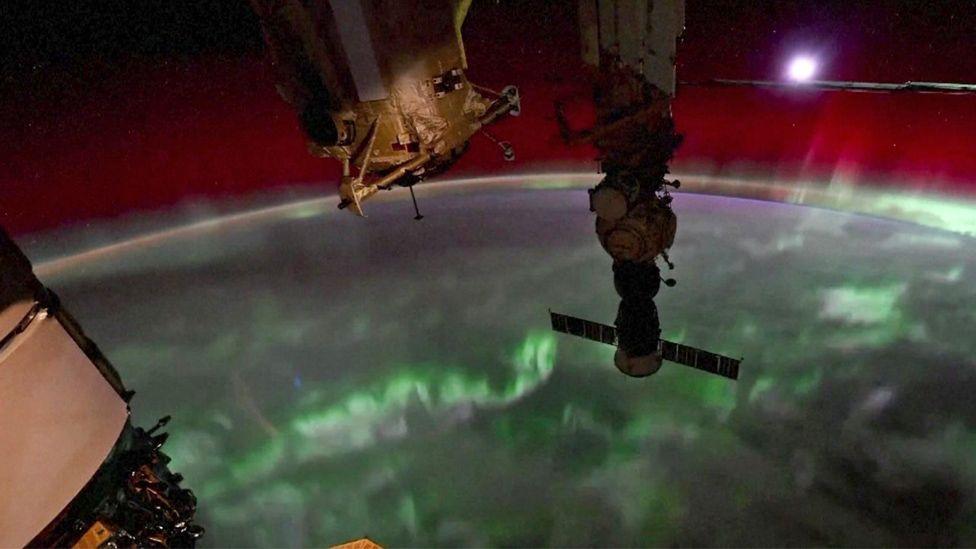
- Attribution
- Published13 August 2024
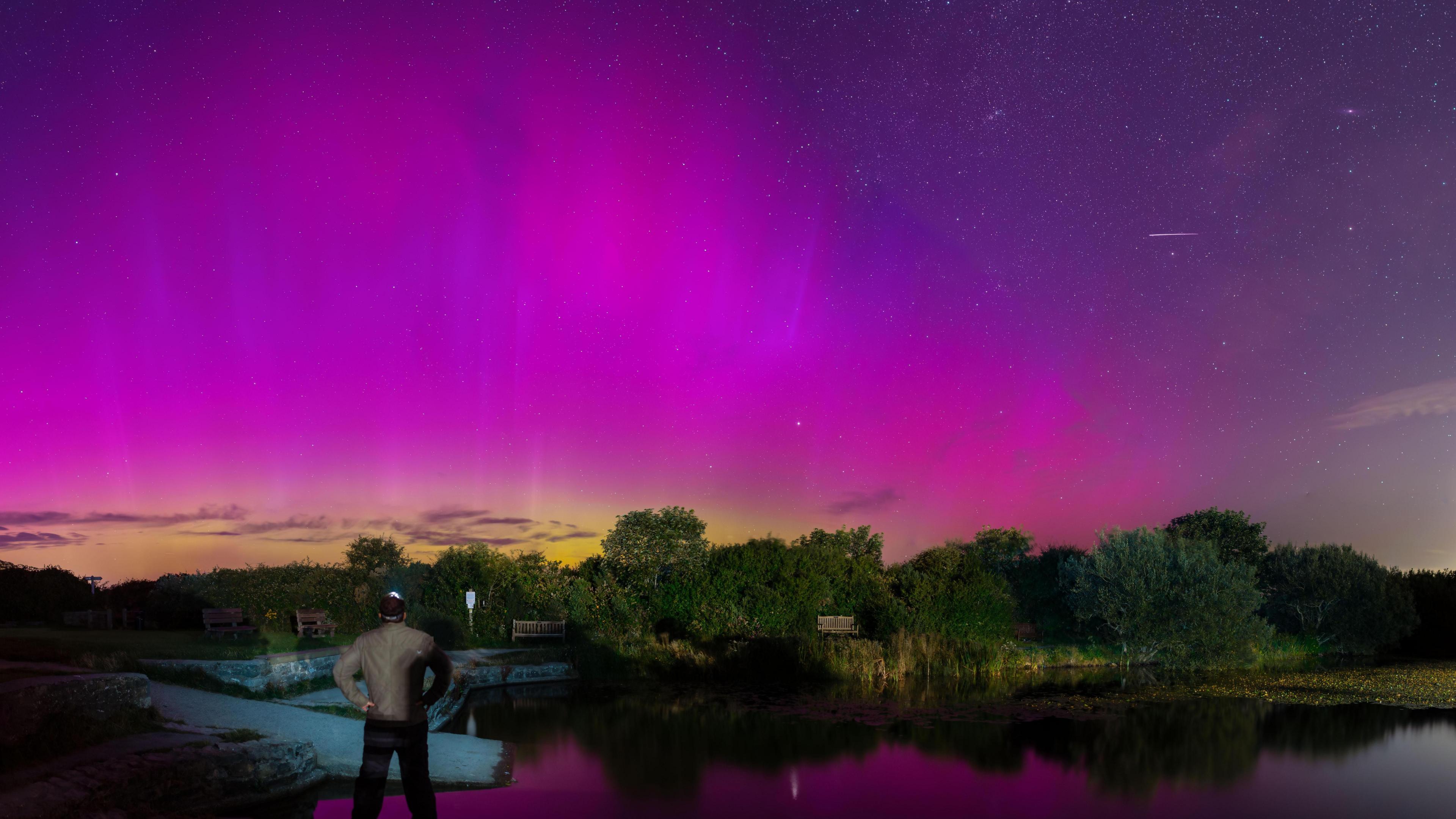
- Published13 August 2024
